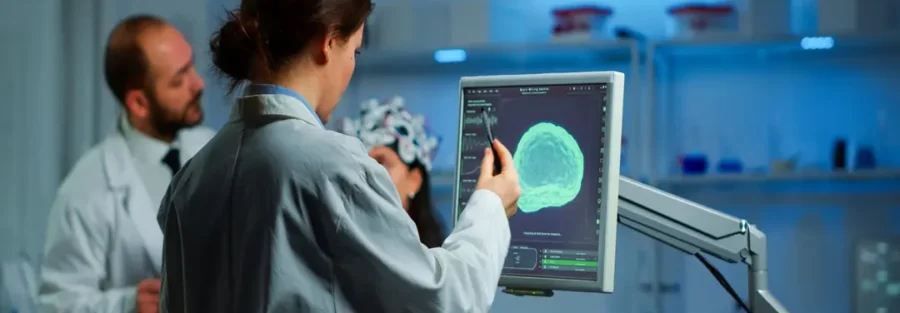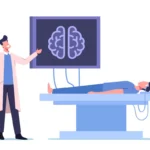Minimally Invasive Brain & Spine Surgery – How It Works and Who Needs It
When you hear the word “neurosurgery,” it’s natural to imagine long hospital stays, large incisions, and painful recoveries. But modern medicine has transformed how brain and spine operations are performed. Today, minimally invasive neurosurgery offers a safer, quicker, and less painful path to healing. In Dhaka, Dr. Hasan Mahbub is at the forefront of this change. As one of the leading neurosurgeons in Bangladesh, he specializes in advanced techniques that prioritize patient comfort and successful outcomes. Whether you’re dealing with a brain tumor or a herniated disc, minimally invasive brain and spine surgery could be the breakthrough you need.
Get in Touch
________________
How Minimally Invasive Brain & Spine Surgery Works
This surgery uses small incisions, endoscopes, and real-time imaging to reach the affected area with high precision. Instead of opening large sections of the skull or spine, surgeons make tiny cuts to insert micro-tools. A high-definition camera displays internal structures on a monitor, enabling accurate and safe intervention. This approach significantly reduces:
- Tissue damage
- Blood loss
- Surgical time
Common Minimally Invasive Procedures
- Microdiscectomy – removes herniated disc material through a small tube
- Endoscopic Brain Tumor Removal – ideal for deep or skull base tumors
- Minimally Invasive Spinal Fusion – stabilizes the spine with less trauma
________________
Conditions Treated with Minimally Invasive Surgery
Dr. Mahbub treats various complex neurological conditions using these techniques, including:
- Brain Tumors – especially those in hard-to-reach areas
- Spinal Herniation (Disc Prolapse) – causing pain or numbness
- Spinal Stenosis – narrowing of the spinal canal
- Spondylolisthesis – slipped vertebra causing nerve compression
- Hydrocephalus – managed using endoscopic third ventriculostomy (ETV)
Many of these conditions, once treatable only through open surgery, now have safer, faster alternatives.
________________
Benefits of Minimally Invasive Surgery
Patients benefit greatly compared to traditional surgery:
- Smaller incisions = less visible scarring
- Reduced hospital stay = quicker discharge
- Less blood loss = lower risk of complications
- Shorter recovery time = back to normal life faster
- Minimal post-op pain = greater overall comfort
In many cases, patients are able to walk the same day after surgery and return to regular activity in 1–2 weeks.
________________
Who Is a Good Candidate?
Minimally invasive surgery isn’t suitable for all patients. It works best for:
- Patients with localized lesions or spine conditions
- Those not improving with therapy or medication
- Elderly/high-risk individuals who can’t tolerate open surgery
- Young patients seeking faster recovery
Dr. Mahbub evaluates each case with imaging, symptom history, and neurological exams to decide the best approach.
________________
Why Choose Dr. Hasan Mahbub for Neurosurgery in Dhaka
Patients choose Dr. Hasan Mahbub for his global expertise, compassionate care, and proven success. He offers:
- International training in keyhole & endoscopic neurosurgery
- Neuronavigation and real-time monitoring for safety
- Transparent patient education and consultations
- Excellent outcomes and long-term follow-up care
________________
FAQs About Minimally Invasive Neurosurgery
Q: Is it safer than open surgery?
Yes. Smaller incisions and reduced tissue disruption lower the risk of infection and complications.
Q: What’s the cost in Bangladesh?
Costs vary by procedure and hospital, but Dr. Mahbub offers affordable world-class care in Dhaka.
Q: How long is the recovery time?
Most patients return to light activity in 2–3 weeks and resume full routines in 4–6 weeks.
Q: Will I still need physiotherapy?
Yes, physical therapy is recommended to speed up healing and ensure optimal results.
________________
Explore More Brain & Spine Topics
- Understanding Skull Base Tumors – Symptoms, Surgery & Recovery
- Spine Surgery for Back Pain – Signs of Serious Spinal Problems
- Emergency Neurosurgery in Dhaka
- Stem Cell Therapy for Neurological Disorders
________________
Looking to Learn More?
Explore the full range of neurological care at NeuralOrtho:
________________
Get in Touch





